The 1910s and 1930s, often referred to as the “Golden Age,” were a significant period in German cinema history. During this time, the German film industry flourished, establishing itself as a creative and technological powerhouse, gaining recognition both domestically and internationally.
Cinema, a fledgling art form at the start of the 20th century, quickly captivated audiences worldwide, Germany being no exception. However, what set German cinema apart was its unique artistic style and innovative storytelling techniques.
At the heart of this burgeoning industry were two movements: Expressionism and New Objectivity.
Expressionism, surfacing in the 1910s, was characterized by its distorted, exaggerated, and often nightmarish depictions of reality. It was a rebellion against the traditional, a protest of sorts that sought to mirror the chaos and anxiety prevalent in society post-World War I. The 1920 silent horror film “The Cabinet of Dr. Caligari” is a shining example of this genre, employing heavily stylized sets and dramatic lighting to portray a deeply psychological narrative.
In contrast, the New Objectivity movement, which emerged in the 1920s, aimed to present a more realistic, straightforward depiction of the world. It rejected the emotional excess of expressionism and instead opted for sober, matter-of-fact portrayals of life, often criticizing contemporary society. “Berlin: Symphony of a Great City,” a 1927 silent documentary, embodies the principles of New Objectivity by capturing a day in the life of Berlin without embellishment or dramatization.
This vibrant period in German cinema also saw the emergence of many talented actresses, each leaving a distinctive mark on the industry. Among them, three names stand out: Asta Nielsen, Marlene Dietrich, and Brigitte Helm. Here are some popular and talented German actresses from the 1910s to 1930s.
#1 Agnes Esterhazy
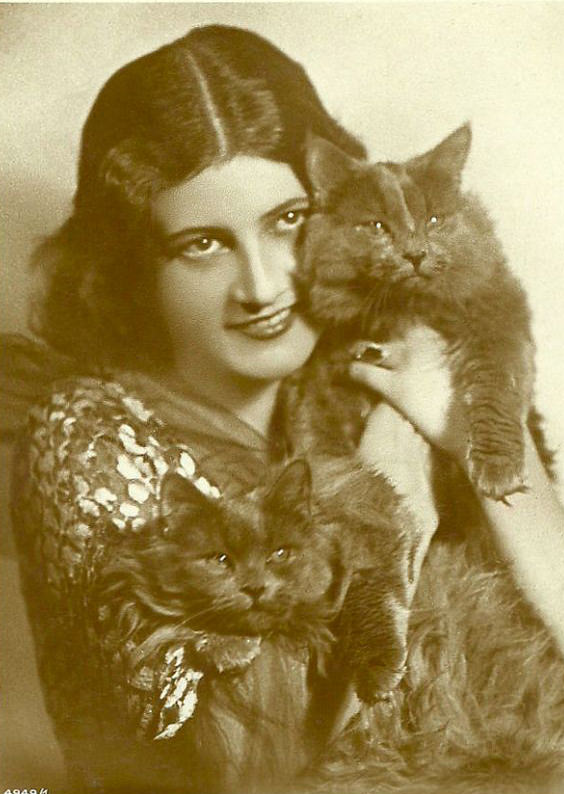
Agnes Esterhazy (1891-1956), a Hungarian film actress, made a notable impact primarily in the silent cinema of Austria and Germany. Her talent and on-screen presence captivated audiences, establishing her as a prominent figure in the industry.
Throughout her career, Esterhazy appeared in more than 30 films, spanning from 1920 to 1943. Her performances showcased her versatility and ability to bring characters to life on screen. The countess-turned-actress left a lasting impression in the film industry with her captivating portrayals.
#2 Carola Toelle
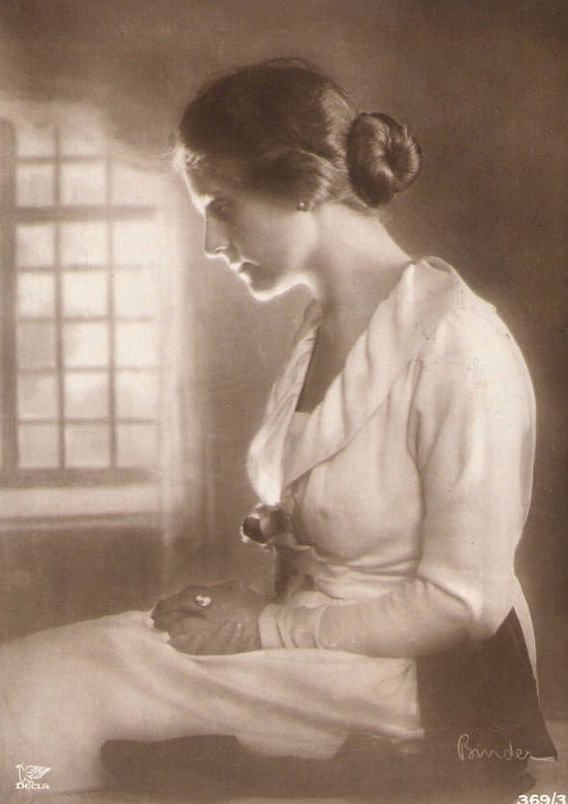
Carola Toelle (1893-1958) was a luminous presence in the German silent cinema of the late 1910s and early 1920s. With her expressive performances, she captured the hearts of audiences across the nation. Known for her versatility, Toelle effortlessly transitioned between dramatic and comedic roles, showcasing her immense talent and range. Her magnetic presence on screen and ability to convey emotions with subtlety made her a beloved figure of the era.
#3 Maly Delschaft
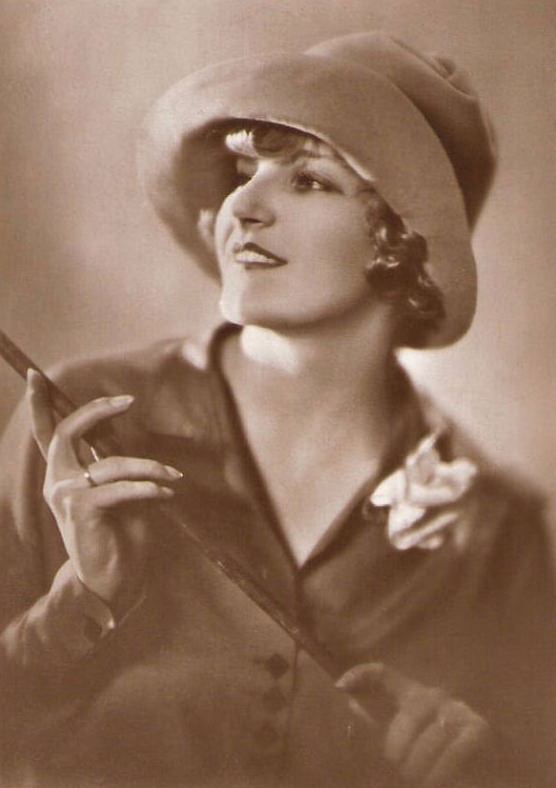
Maly Delschaft (1898-1995) was a remarkable German actress who left an indelible mark on both the silent cinema and post-war era. Initially shining on the theatrical stage, Delschaft transitioned seamlessly into the world of film, becoming a prominent star of German silent cinema. Despite the challenges presented by the Nazi era, she persevered and continued her career, often in supportive roles. Following the Second World War, Delschaft found herself working in East Germany, collaborating with the state-controlled DEFA studio.
#4 Lotte Lorring
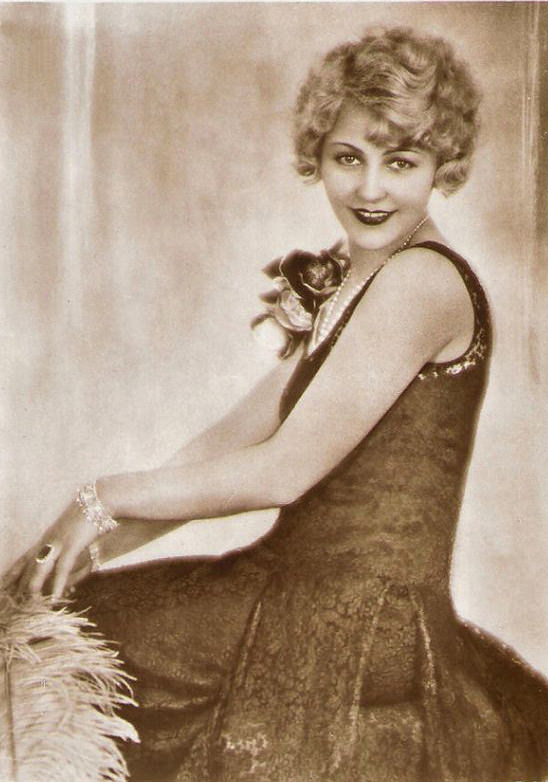
Lotte Lorring (1893-1939) was a versatile German actress and singer who began her artistic journey as an operetta performer in provincial theaters. Her talent and charm soon caught the attention of filmmakers, leading to her presence in a wide range of German silent and sound films from 1920 to 1935. Lorring effortlessly transitioned between supporting and leading roles, showcasing her versatility and captivating audiences with her performances. Notably, she also had the opportunity to appear in international productions, further expanding her artistic horizons.
#5 Olga Tschechowa
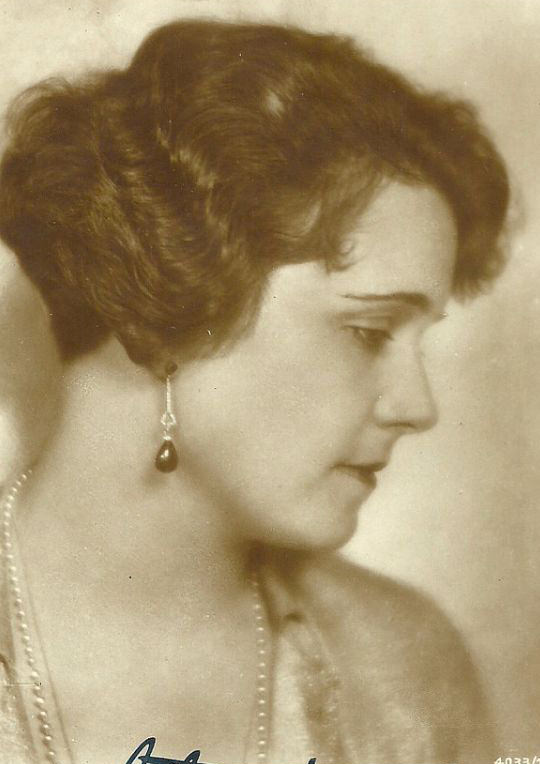
Olga Tschechowa (1897-1980), a distinguished German-Russian actress, captured the hearts of audiences as one of the silent film era's most beloved stars. Known for her grace and allure, Tschechowa maintained an air of mystery throughout her life. Rumors circulated that she had connections to espionage, purportedly working as a Russian agent during her time in Nazi Germany. While the details surrounding her alleged involvement remain elusive, they add an intriguing layer to her enigmatic persona.
#6 Brigitte Helm
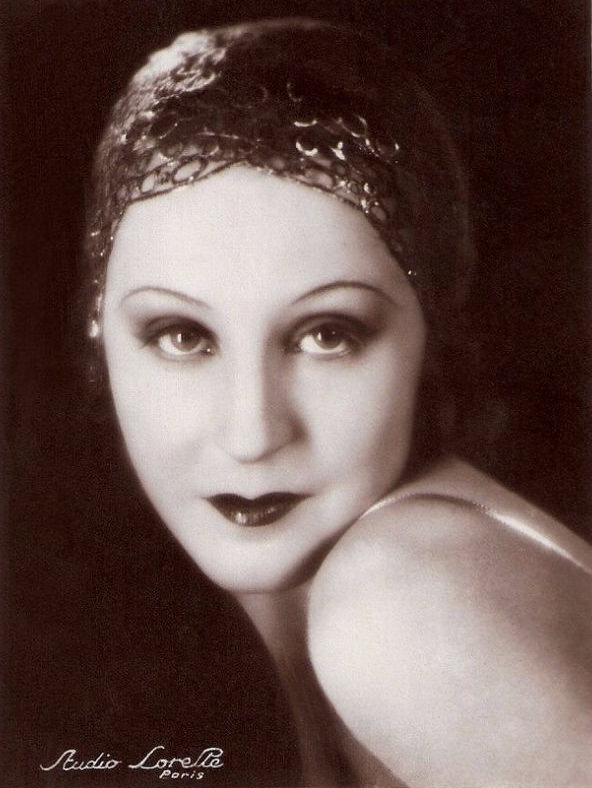
Brigitte Helm (1906-1997) rose to stardom at a tender age when director Fritz Lang discovered her for the lead role in his groundbreaking film, Metropolis. Her portrayal of the dual characters, the noble Maria and her sinister robot doppelgänger, showcased her remarkable talent. Helm became synonymous with playing seductive yet villainous ice queens, captivating audiences in films like Alraune, L'Argent, The Mistress of Atlantis, and Gold. However, Helm also displayed her versatility by delivering nuanced performances in emotionally expressive roles such as Die Liebe der Jeanne Ney and Abwege. In contrast to her on-screen personas, Helm was a modest and unambitious individual. Disenchanted with the German film industry under Nazi control, she retired after a prolific but short-lived career, residing in Switzerland and shunning the limelight.
#7 Dorothea Wieck
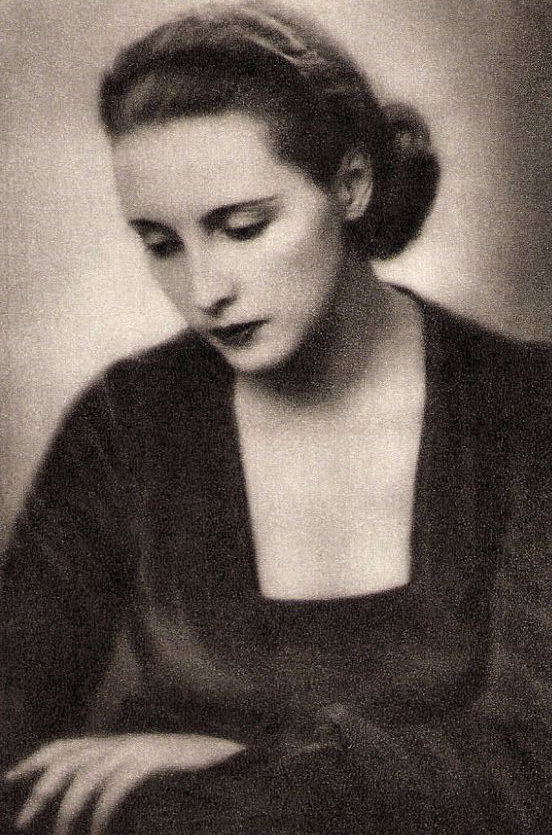
Dorothea Wieck (1908-1986), a Swiss actress, achieved both film stardom and a revered status as a lesbian icon for her memorable portrayal of the beloved teacher, Fräulein von Bernburg, in the German classic Mädchen in Uniform (Leontine Sagan, 1931). This role catapulted her into the limelight and garnered her widespread acclaim. Alongside her prolific film career, Wieck was also a prominent figure in the world of theater, gracing the stages of renowned establishments such as the Deutsche Theater and the Schillertheater in Berlin.
#8 Xenia Desni
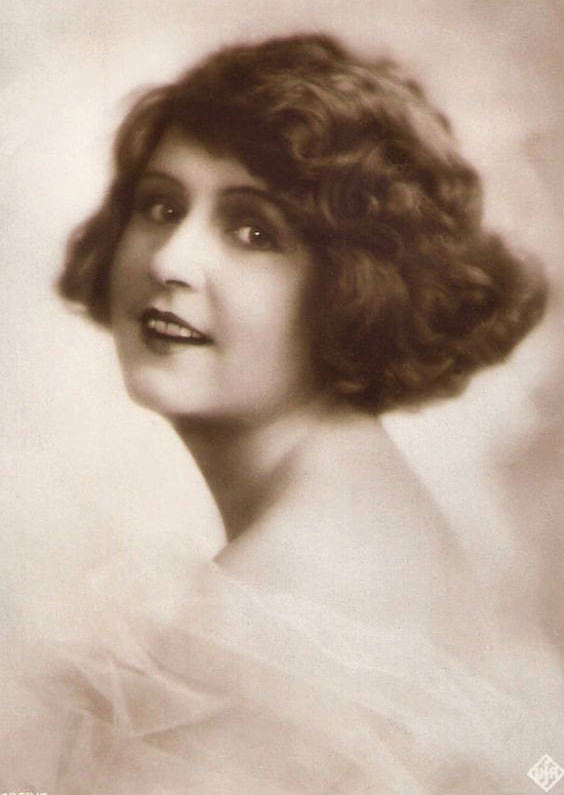
Xenia Desni (1894-1954), a Ukrainian actress, soared to prominence as a shining star of the German silent cinema. Her magnetic presence and talent captivated audiences, earning her a devoted following. Desni's on-screen performances showcased her versatility and ability to bring characters to life with depth and emotion. Although her career flourished during the silent film era, Desni also made successful transitions to sound films, leaving an enduring impact on German cinema. With her beauty, charisma, and undeniable talent, Xenia Desni remains an integral part of the rich tapestry of the silent film era, etching her name as one of the iconic figures of German cinema's golden age.
#9 Hilda Rosch
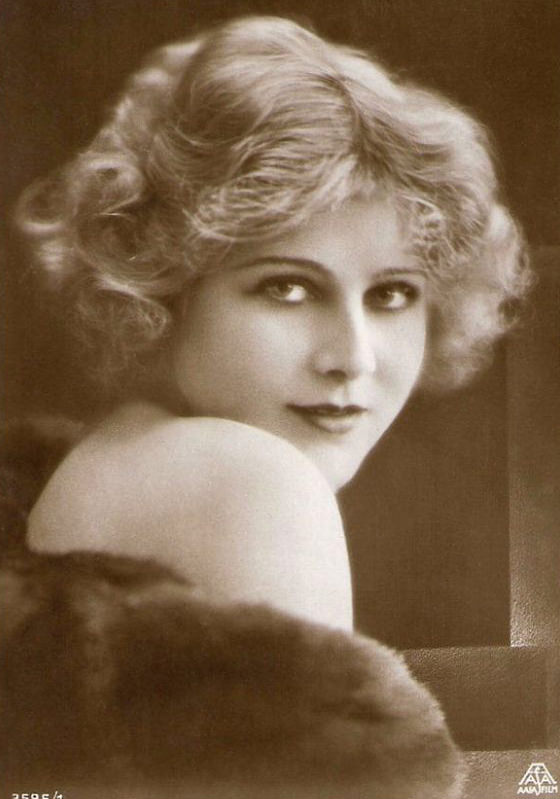
Hilda Rosch, a German actress of the late 1920s and early 1930s, remains somewhat of a mystery despite her undeniable talent and beauty. Despite her limited filmography, consisting of only eight films between 1928 and 1931, Rosch's popularity was evident through the production of postcards featuring her captivating image. The reasons behind her brief career are unclear, leaving us to speculate whether it was due to the transition to sound films or the rise of the Nazi regime. Unfortunately, detailed information about Hilda Rosch remains scarce, and further insight into her life and career proves elusive.
#10 Ursula Grabley
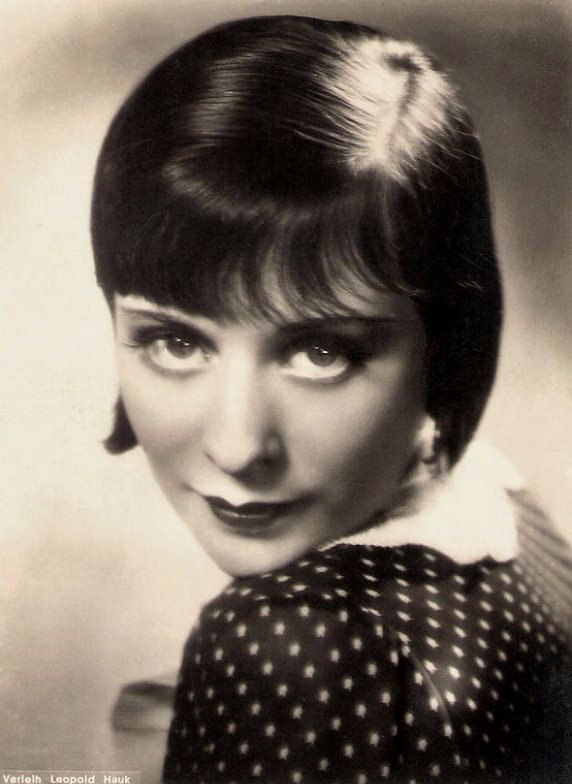
Ursula Grabley (1908-1977), known as the 'Girl of Today' in the 1930s, was a prolific German actress who left an impressive mark in over 60 films and TV productions. Her talent and on-screen presence made her a prominent figure in the German entertainment industry. However, her career took an abrupt turn in 1939 when a dispute arose with Joseph Goebbels, the Minister of Propaganda for Nazi Germany. The exact details surrounding the disagreement remain unclear, but it resulted in an interruption to Grabley's film career.
#11 Blandine Ebinger
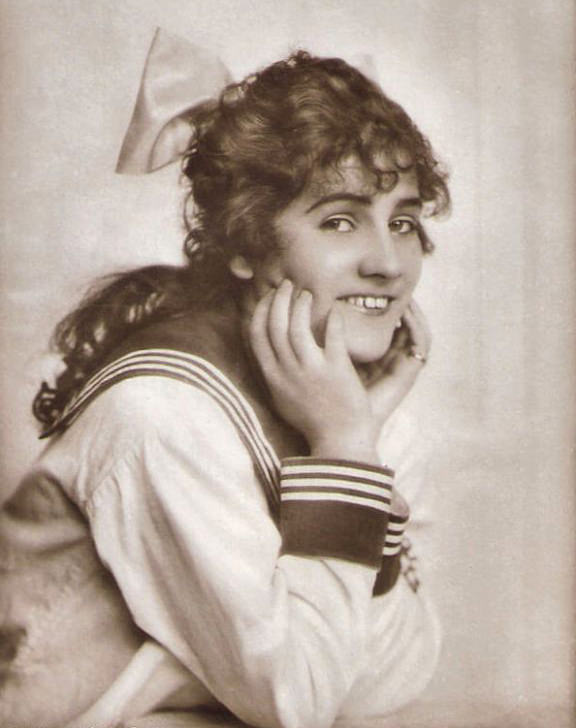
Blandine Ebinger (1899-1993) was a renowned German cabaret singer and actress whose talents spanned across multiple decades. Described by author Erich Kästner as a "master of the tragic-grotesque," Ebinger captivated audiences with her unique and distinctive style. Her career in cinema lasted an astonishing seventy years, during which she portrayed over 90 diverse and memorable characters. Whether in leading or supporting roles, Ebinger's impressive acting skills always shone through. Her performances were marked by her expressive eyes and a remarkable ability to embody the essence of her characters.
#12 Valerie Boothby
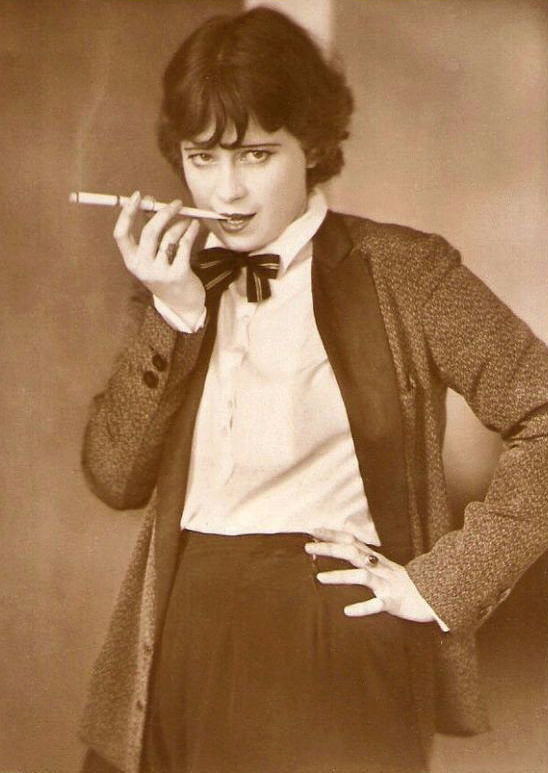
Valerie Boothby (1906-1982) was a beloved German actress who achieved popularity during the vibrant Weimar cinema of the late 1920s and early 1930s. She made her debut in 1925, entering the film industry during the height of the German silent film era. Boothby quickly gained recognition and a growing fan base through her captivating performances. She appeared in a variety of silent films, showcasing her versatility and talent. Some notable films in her repertoire include Die Frau mit dem Weltrekord (1927), Das letzte Souper (1928), and Mädchen am Kreuz (1929). As the film industry transitioned to sound, Boothby continued to work on projects such as In einer kleinen Konditorei (1930) and Der Herr Finanzdirektor (1931).
#13 Henny Porten
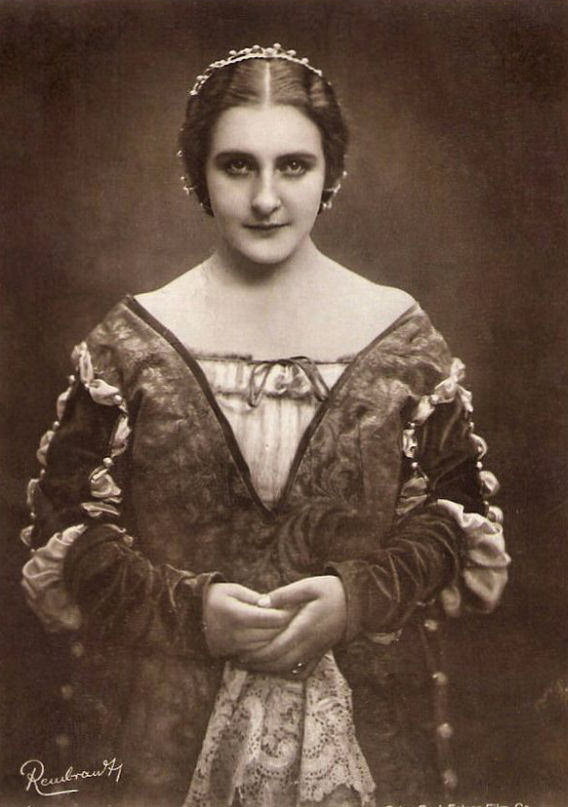
Frieda Ulricke "Henny" Porten (1890-1960) was a pioneering German actress and film producer who became Germany's first major film star during the silent era. With a career spanning from 1906 to 1955, she appeared in over 170 films. Notably, Porten entered the film industry without prior stage experience, distinguishing her from many of her contemporaries. In the early years of her career, Porten collaborated closely with her husband, Curt A. Stark, who tragically died during World War I. Her father, Franz Porten, also an actor and film director, contributed to her artistic upbringing. Following her remarriage to Wilhelm von Kaufmann in 1921, Porten faced the challenges brought by the rise of the Nazis. Despite her prolific output of twelve films a year, her career suffered after she refused to divorce her Jewish husband. Though she managed to make ten films during the Nazi era, the restrictions and difficulties she faced were evident.
#14 Maria Solveg
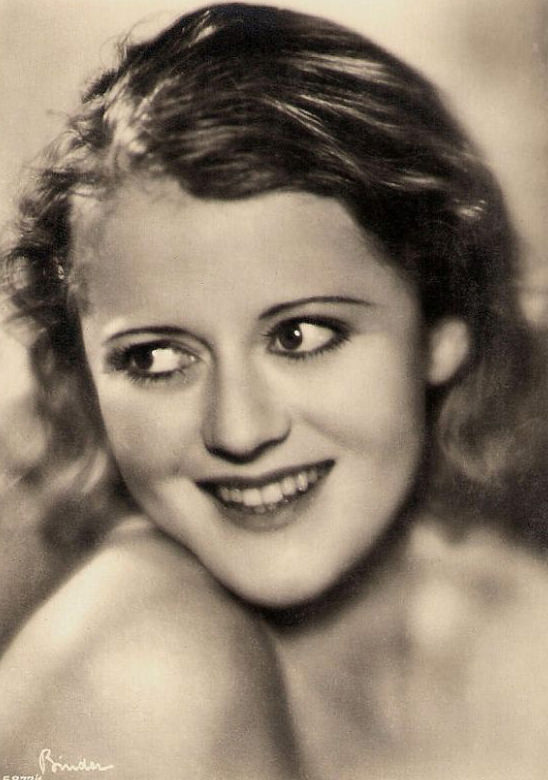
Maria Solveg, also known as Maria Matray (1907-1993), was a prominent figure in the late Weimar cinema as both an actress and screenwriter. Her talent and presence captivated audiences during this vibrant period of German film. However, with the rise of Hitler and the Nazi regime, Solveg, being Jewish, was forced into exile. She embarked on a new chapter in her career in the United States, where she found success as a choreographer and writer. In her new home, Solveg embraced her creative abilities in different ways, contributing to the performing arts as a choreographer and utilizing her writing skills. Her journey from the tumultuous times in Germany to a thriving career in the US represents both the resilience and adaptability of artists during times of adversity.
#15 Käthe von Nagy
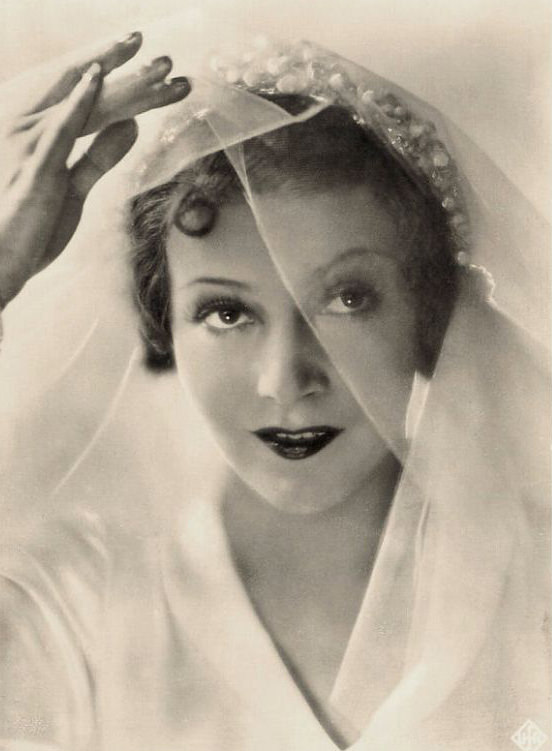
Käthe von Nagy (1904-1973), a Hungarian actress, began her career in the late 1920s as a "Backfish," a term used to describe young girls in German films. However, her talent and charm quickly propelled her to stardom in both German and French cinema during the early 1930s. Known for her fashionable style and captivating presence, von Nagy became a beloved figure of the silver screen. Her performances showcased not only her acting prowess but also her innate charm and allure. As a versatile actress, she effortlessly transitioned between different roles and genres, leaving an indelible mark on both German and French cinema of the time.
#16 Mary Kid
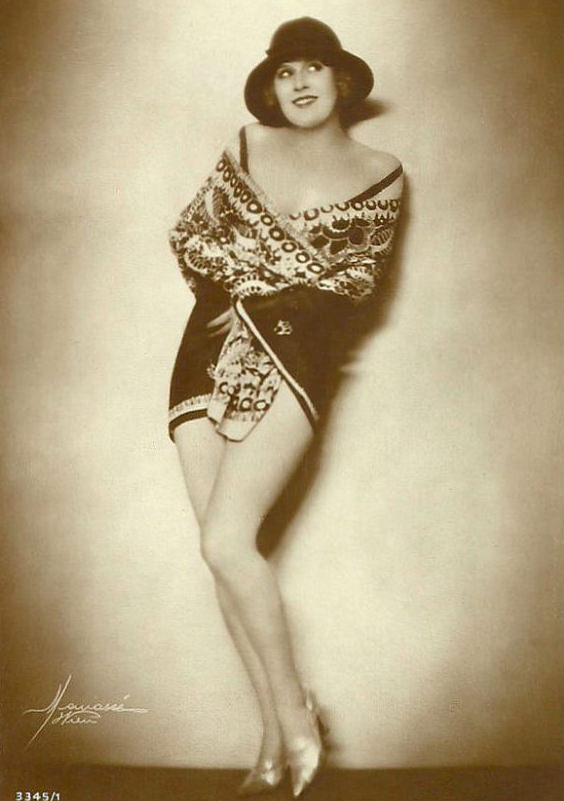
Mary Kid (1901-1988) was a renowned actress who found popularity in the Austrian and German silent cinema. Known for her captivating performances, Kid established herself as a prominent figure during this era. Additionally, she ventured into the realm of early sound films, showcasing her versatility and adaptability as an actress. Notably, she also made appearances in two early sound films in Italy, expanding her international reach.
#17 Ria Jende
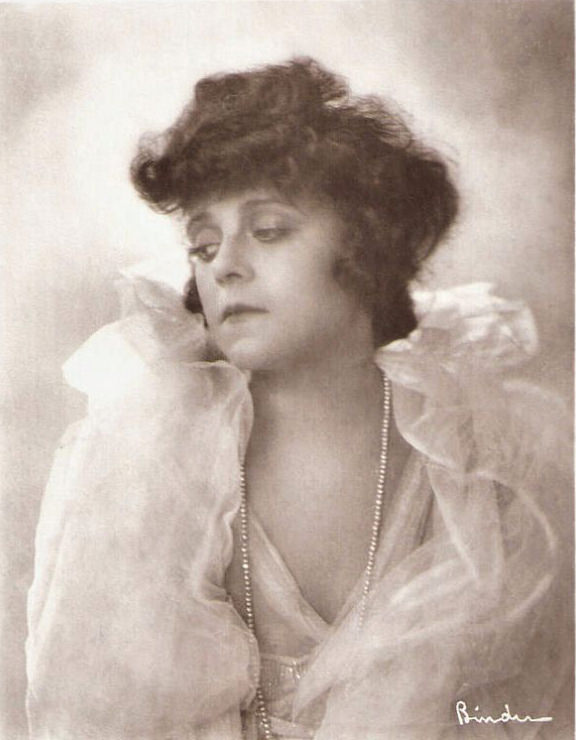
Ria Jende (1898-?), a German-Belgian actress, rose to stardom as both an actress and producer in the silent German cinema. With her captivating performances, she left a lasting impression on the silver screen, appearing in a total of 40 films. However, her career took a turn when she married and subsequently retired from the industry. While the details of her post-retirement life remain unknown, Ria Jende's contributions to the silent film era as an actress and producer are a testament to her talent and influence in German cinema.
#18 Maria Paudler
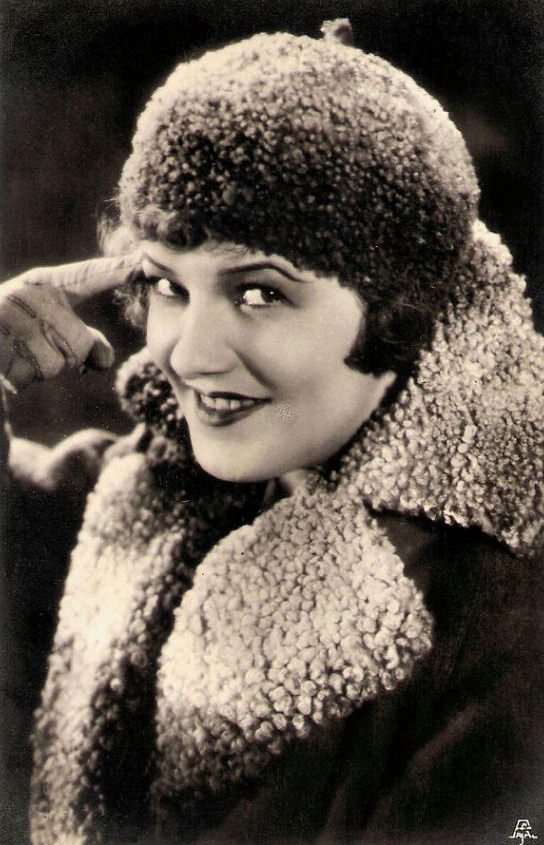
Maria Paudler (1903-1990), a German actress, achieved popularity as a beloved star of the late silent German cinema. With her captivating performances, Paudler enchanted audiences and became a prominent figure during this era. Notably, she also made history by playing the leading role in the first-ever German TV film, showcasing her versatility across different mediums of entertainment. Maria Paudler's contributions to both silent film and television exemplify her talent and adaptability as an actress, leaving an indelible mark on German cinema and paving the way for future generations in the industry.
#19 Marianne Winkelstern
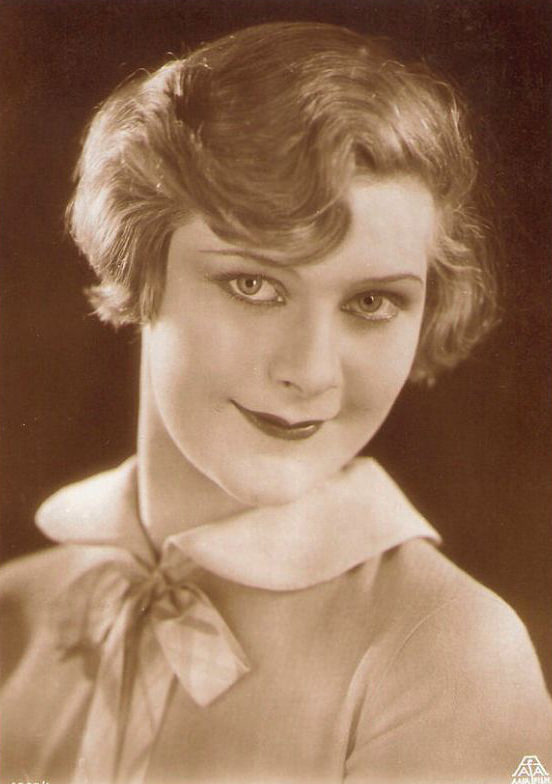
Marianne Winkelstern (1910-1966), a German actress, gained recognition for her talent as a ballerina in both Germany and England. Her skill and grace on the dance floor captivated audiences in both countries. In Germany, Winkelstern also ventured into the world of film, appearing in several silent films and early sound films. Although her filmography may have been relatively modest, her presence on screen showcased her versatility as an artist, allowing her to leave her mark in the realm of German cinema.
#20 Lilian Weiss
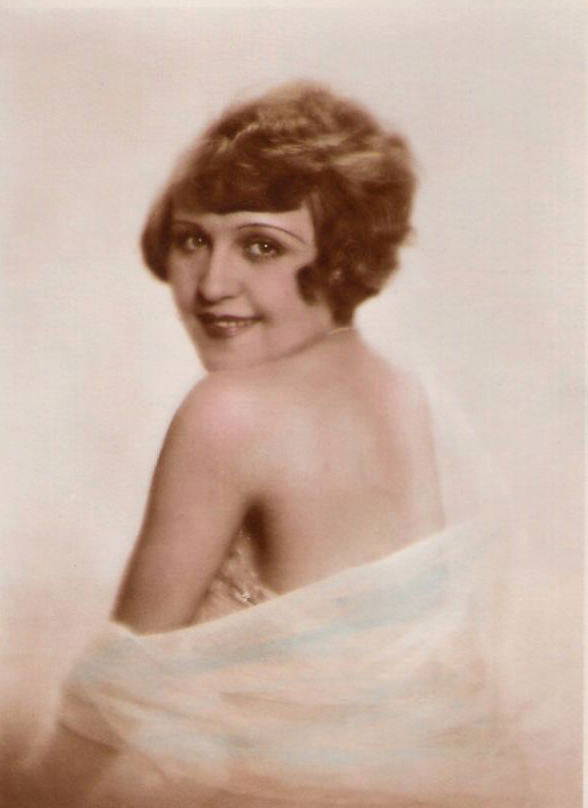
Lilian Weiss, a charming film actress, made her mark in a dozen silent German films during the 1920s. Her on-screen presence and talent captivated audiences of the time. However, with the introduction of sound films, it is speculated that Weiss's film career may have come to an end. Unfortunately, there is limited information available about Lilian Weiss beyond the films in which she appeared. Even well-informed sources, such as the German Filmportal.de, provide little personal information about her. Lilian Weiss's career was relatively short, spanning only five years.
#21 Lotte Neumann
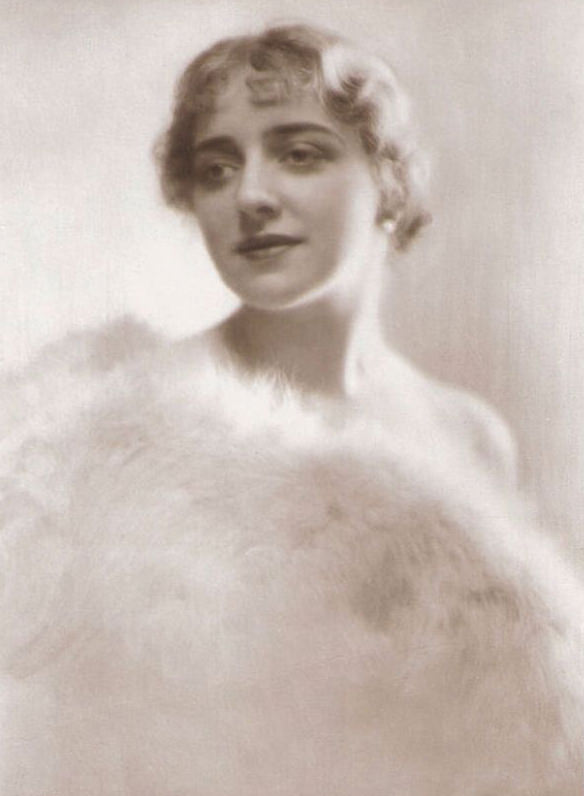
Lotte Neumann (1896-1977) emerged as one of the most successful actresses during the early years of German silent cinema. Her talent and versatility on screen captivated audiences, establishing her as a prominent figure in the industry. Not only an actress, Neumann also expanded her involvement in filmmaking, working as a screenwriter and producer. Her contributions to the German silent cinema spanned various roles, showcasing her multifaceted abilities and commitment to the art form.
#22 Anny Ondra
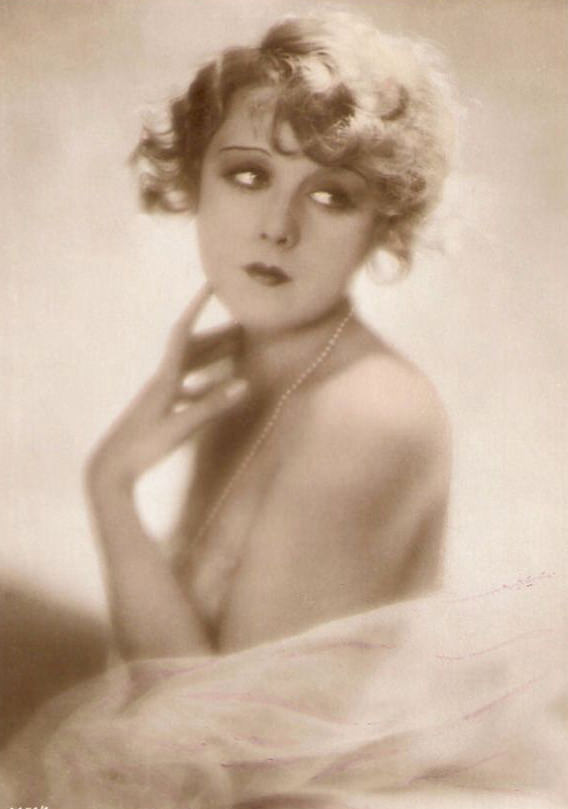
Anny Ondra (1903-1987) was a multi-talented singer, film, and stage actress of Polish, Czech, Austrian, German, and French descent. She achieved popularity during the 1920s and 1930s, starring in Czech, Austrian, and German comedies. Notably, Ondra holds the distinction of being Alfred Hitchcock's first "Blonde" in his films. Her versatile acting skills and magnetic on-screen presence garnered her a dedicated fan base. Ondra's talent allowed her to transition seamlessly between comedic and dramatic roles, leaving a lasting impact on the European film industry. Her collaboration with Hitchcock marked a significant milestone in her career, further solidifying her status as a notable actress.
#23 Lil Dagover
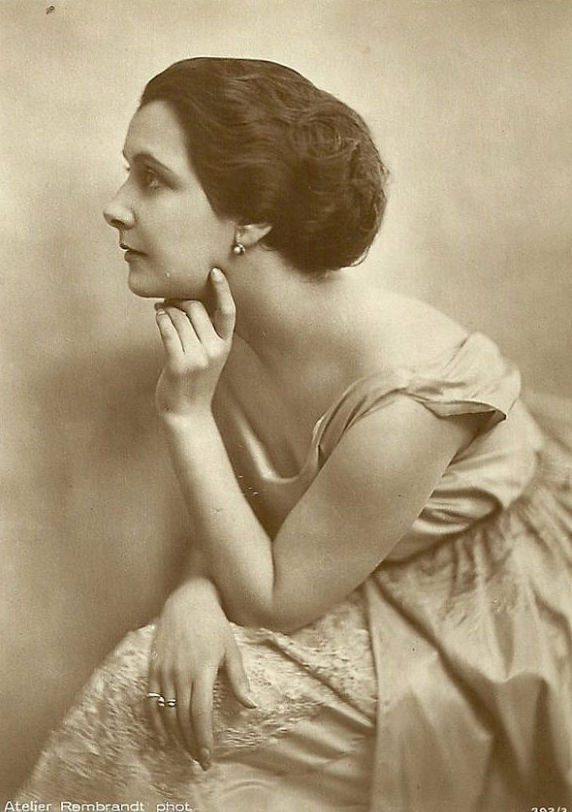
Lil Dagover (1887-1980), a Dutch-born German film actress, possessed an exotic and captivating beauty that made her a prominent figure during the golden age of German silent cinema. She achieved breakthrough success in the iconic expressionist film Das Cabinet des Dr. Caligari (1920), where she portrayed the prey of Dr. Caligari's monster. As her career progressed, Dagover's delicate and ethereal beauty transformed, casting her in the role of a sophisticated "Salondame," a lady of the screen. Throughout her career, which spanned nearly six decades, Dagover left an indelible mark on the film industry. Her talent and versatility as an actress allowed her to take on a wide range of roles, captivating audiences with her performances.
#24 Hertha Thiele
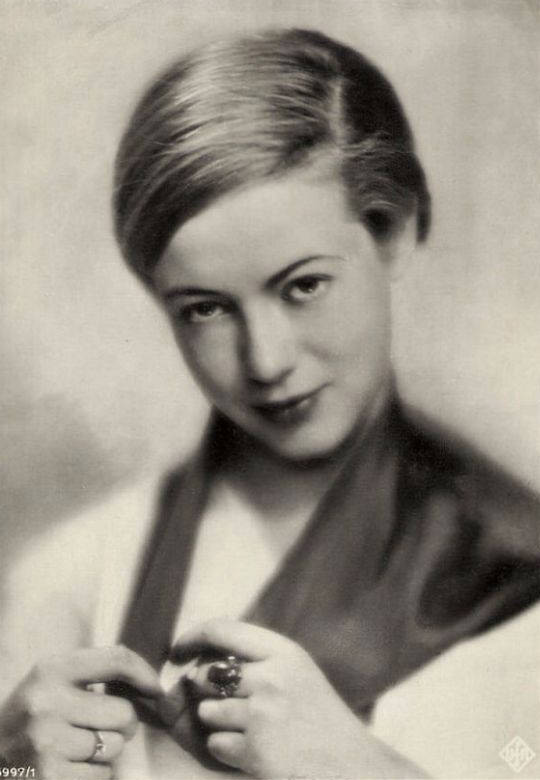
Hertha Thiele (1908-1984) made a notable impact during the Weimar Republic with her appearances in controversial stage plays and films. However, it was her role as a 14-year-old schoolgirl in love with her female teacher in the groundbreaking film Mädchen in Uniform/Girls in Uniform (1931) that propelled her to widespread recognition. Thiele's performance in the film resonated with audiences, particularly women, and she received thousands of fan letters as a result. In the years following this breakthrough role, Thiele continued her acting career and eventually became a well-known film and television actress in East Germany. Her talent and versatility allowed her to leave a lasting mark on the film industry, earning her acclaim in a variety of roles.
#25 Mady Christians
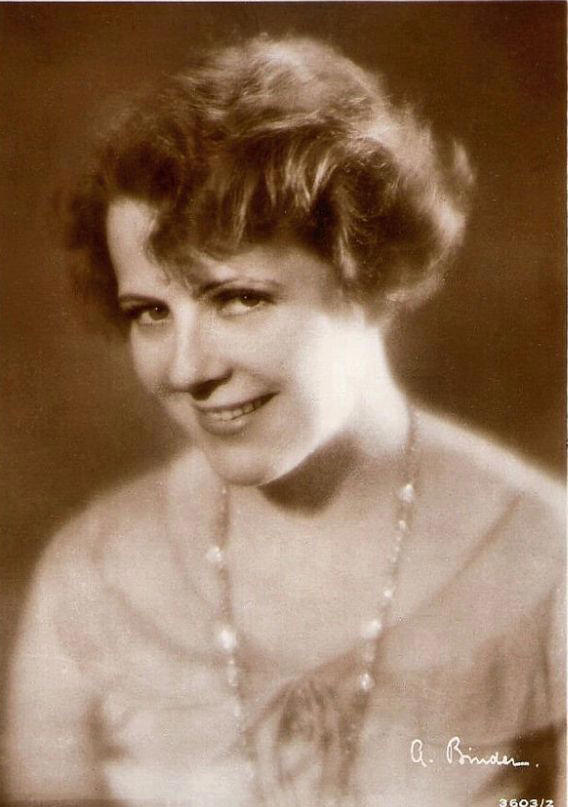
Mady Christians (1892-1951), an Austrian-born stage actress, made a significant impact not only in the German silent cinema but also in Austrian, French, British, and Hollywood films. Born into a family of performers, Christians' upbringing immersed her in the world of theater and acting. She made her film debut in Audrey (1916) and later returned to Berlin, where she studied under the renowned Max Reinhardt. She quickly established herself as a leading actress in silent films, starring in notable productions such as Nachtschatten (1918), Die Nacht des Grauens (1919), and Die Gesunkenen (1919). Her breakthrough role came in the serial Der Mann ohne Namen (1921), alongside Harry Liedtke. Over the following years, Christians appeared in a range of acclaimed films, including classics like Das Weib des Pharao (1922), Ein Glas Wasser (1923), Die Finanzen des Großherzogs (1924), Michael (1924), Ein Walzertraum (1925), and the two-part costume drama Königin Luise (1927-1928).
#26 Gerda Maurus
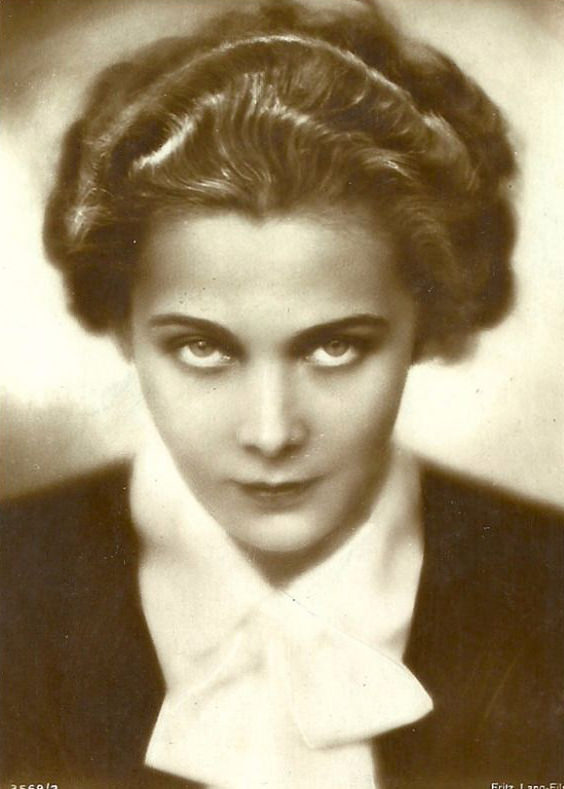
Gerda Maurus (1903-1968), an Austrian actress, became a renowned star of the silent screen. Her striking features, characterized by protruding cheekbones and a commanding gaze, captivated audiences and earned her a dedicated following. Maurus' allure extended beyond the silver screen, as she bewitched influential figures such as her director Fritz Lang and Nazi Minister Josef Goebbels. Her talent and magnetic presence allowed her to shine in various roles, establishing herself as a captivating and versatile actress. Gerda Maurus' ability to enchant both on and off-screen speaks to her captivating charm and undeniable talent. Despite the passage of time, her impact as a prominent figure in the silent film era remains significant.
#27 Fern Andra
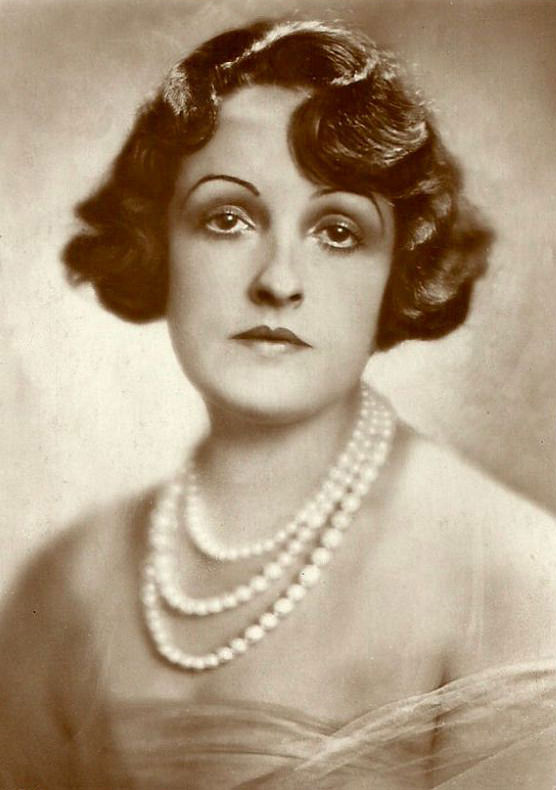
Fern Andra (1893-1974), an American actress, emerged as a prominent figure and one of the most popular film stars in German cinema during the 1910s and early 1920s. Her unique and 'modern' approach to acting captivated audiences, and she became known for her daring and adventurous on-screen performances. Andra's versatility and athleticism were particularly notable, as she mastered various physical feats in her films. From tightrope walking to riding horses without a saddle, driving cars and motorcycles, bobsledding, and even boxing, she fearlessly embraced these challenging activities as part of her acting repertoire.
#28 Evelyn Holt
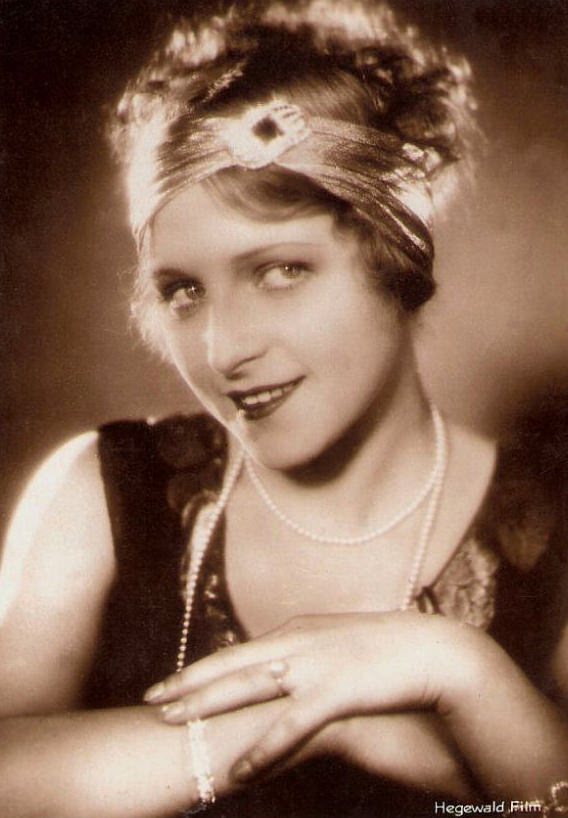
Evelyn Holt (1908-2001) was a highly popular German film actress who achieved significant success during the late silent era and the early sound era. Her talent and on-screen presence captivated audiences, establishing her as a prominent figure in German cinema. With her captivating performances, Holt garnered a dedicated fan base and became a sought-after actress. Her ability to transition seamlessly between silent films and the emerging sound era showcased her versatility and adaptability as an actress. Holt's talent and popularity allowed her to leave a lasting impact on the German film industry.
#29 Erna Morena
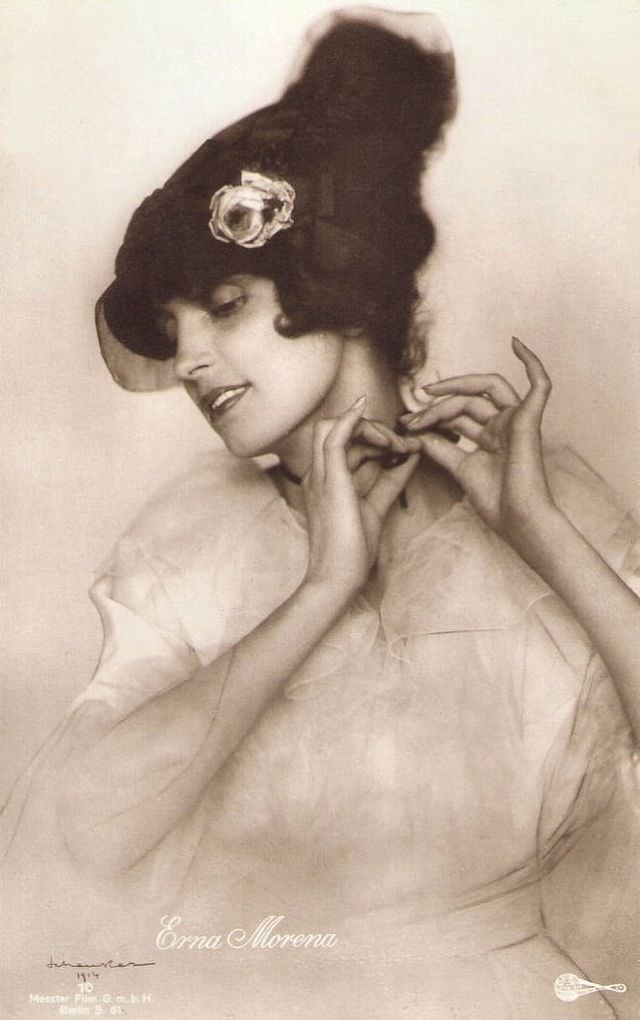
Erna Morena (1885-1962), born Ernestine Maria Fuchs, enjoyed an illustrious career in German silent cinema during the 1910s and 1920s. Her talent and captivating performances made her a prominent figure in the industry, and she continued to regularly appear in German sound films until the mid-1930s. After initially working in various roles, including as a nurse, Morena enrolled at Max Reinhardt's theater school in 1910/1911, which led to her engagement at the prestigious Deutsches Theater. In 1913, she made her debut in film, appearing in several dramas by Eugen Illés for the Duskes company. Morena later joined the Messter company, where she gained recognition with her own Erna Morena series, rivaling the popularity of Asta Nielsen and Henny Porten. Her talent and versatility shone through, captivating audiences and earning critical acclaim.
In 1917, Morena moved to PAGU and garnered further acclaim with her performance in Paul Leni's Prima Vera, an adaptation of Dumas' Camille/La dame aux camélias. Critics praised her nuanced and subtle acting. During this time, Morena was married to editor and stage author Wilhelm Herzog, who also played a role in creating her stage name.
#30 Iris Arlan
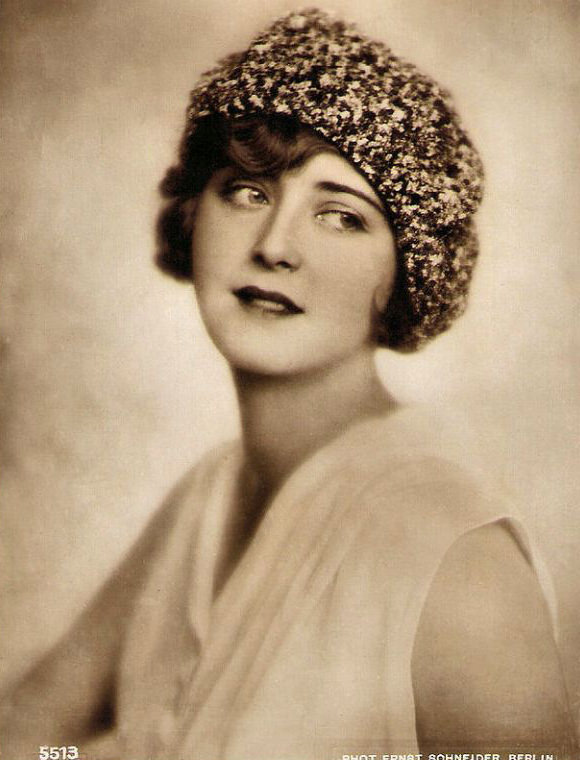
Iris Arlan, a beautiful actress whose exact dates are unknown, made a mark in the world of German and Austrian silent films. She was associated with Max Reinhardt's prestigious theatre company and showcased her talent on both stage and screen. Arlan's captivating performances in various silent films garnered attention and established her as a rising star.
However, after a few roles in sound films around 1936, Arlan seemingly disappeared from the public eye, fading into oblivion. The details of her life and the reasons behind her departure from the film industry remain elusive. While Iris Arlan's career may have been relatively short-lived, her contributions to German and Austrian cinema during the silent era leave a lasting imprint on the industry's history.
#31 Lucy Doraine
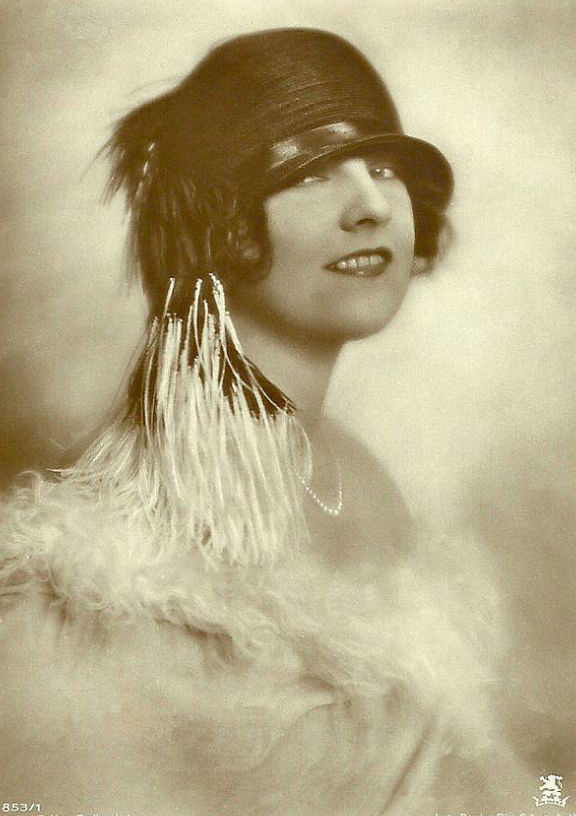
Lucy Doraine (1898-1989), despite her French-sounding name, was a prominent Hungarian actress who made a significant impact on the Austrian and German cinema during the 1920s. Her talent and captivating performances earned her recognition and established her as a major figure in the industry.
However, Doraine's career took an unfortunate turn when she moved to Hollywood. The advent of sound film revolutionized the industry, and the transition to synchronized dialogue proved challenging for many actors and actresses. It seems that this shift ultimately impacted Doraine's career, as her time in Hollywood marked the end of her prominent status in the film industry.
#32 Aud Egede Nissen
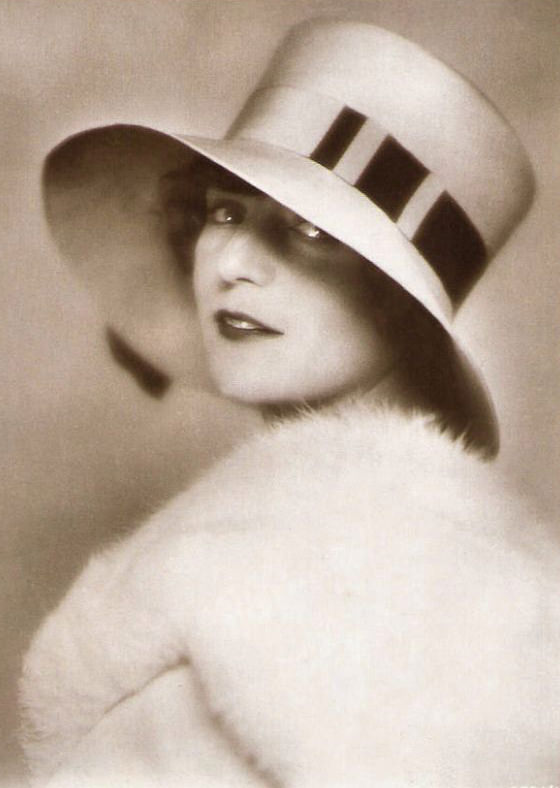
Aud Egede Nissen (1893-1974), a Norwegian film actress, achieved stardom in the German silent cinema. Known for her captivating performances, Nissen left an indelible mark on the industry during the 1910s. Notably, she also ventured into film production, producing numerous films during this period.
In the 1930s, Nissen returned to her native Norway, where she continued her acting career. While she appeared in some films, her focus shifted primarily to the stage, showcasing her talent and versatility in theatrical productions.
#33 Lotte Neumann
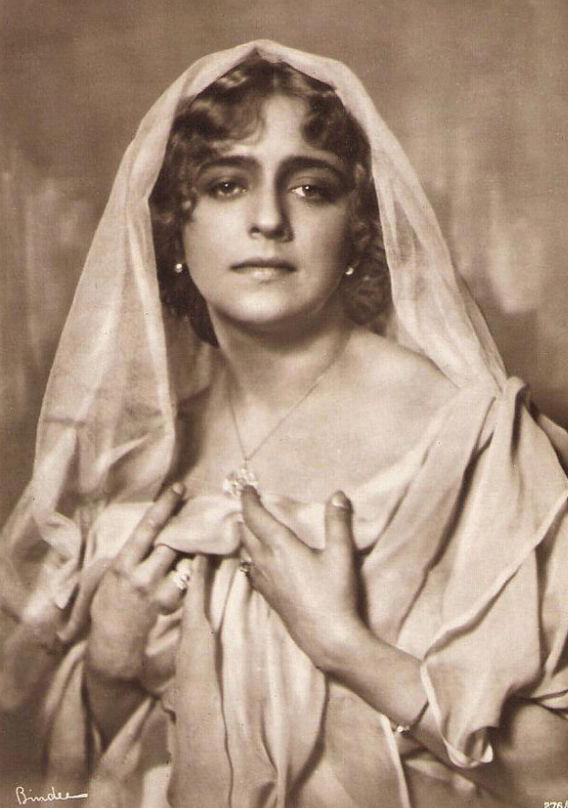
Lotte Neumann (1896-1977) emerged as one of the most successful actresses during the early days of German silent cinema. Her talent and on-screen presence captivated audiences, establishing her as a prominent figure in the industry. In addition to her acting prowess, Neumann also made significant contributions as a screenwriter and producer, showcasing her versatility and creative vision.
Her performances in silent films resonated with audiences, solidifying her status as a beloved and influential actress of her time. Lotte Neumann's ability to bring characters to life on screen, coupled with her behind-the-scenes contributions, allowed her to make a lasting impact on the German film industry.
#34 Hanni Weisse
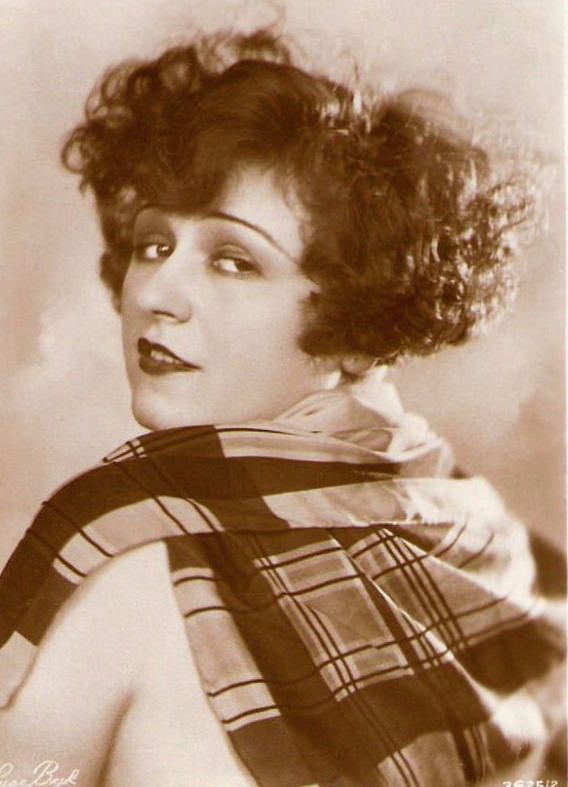
Hanni Weisse (1892-1967), a German actress, was one of the esteemed film divas of the early German silent film era. Her talent and charisma propelled her to stardom, and she maintained her prominence well into the 1920s. Although she initially worked at the Berliner Luisentheater, Weisse's career was forever changed when she entered the world of cinema.
Under the direction of Max Mack, Weisse made her film debut in the short film Der Zigeunerin (1912). One of her early successes was Der Andere (1913), which garnered critical acclaim as one of the first artistic movies of its time. In the subsequent years, Weisse appeared in numerous significant productions, including Das Eiserne Kreuz (1914), Das dunkle Schloß (1915), and Alkohol (1920). Notably, she also starred in popular movies featuring the detective Sherlock Holmes, such as Der Hund von Baskerville (1914).
#35 Elisabeth Pinajeff

Elisabeth Pinajeff (1900-1995) was a Russian-Lithuanian actress who left a mark in German and French cinema during the 1920s and 1930s. Her talent and captivating performances on screen garnered recognition and established her as a notable figure in the industry.
However, in the 1950s, Pinajeff became involved in the notorious scandal of the Ballets roses. The details of her specific role in the scandal are unclear, but it brought unwanted attention and controversy to her career. It is important to note that scandals can overshadow an artist's work and personal life, and it is unfortunate when such events impact their legacy.
#36 Lya Mara
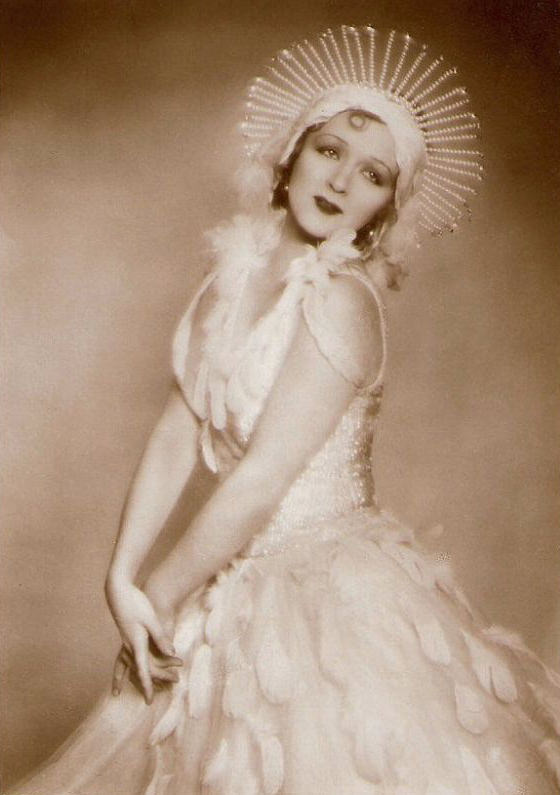
Lya Mara (1897-1960s), a renowned actress, stood among the brightest stars of the German silent cinema. Her exceptional talent and captivating screen presence propelled her to great heights, earning her a dedicated following and widespread recognition. Such was her fame that a novel was even written about her stardom, serialized in 100 episodes between 1927 and 1928.
However, as the film industry transitioned to sound, Mara's career experienced a significant setback. The arrival of sound film marked a turning point in the industry, and many actors and actresses struggled to adapt to the new medium. Sadly, this transition had a substantial impact on Mara's career, leading to a decline in her prominence.
#37 Claire Rommer
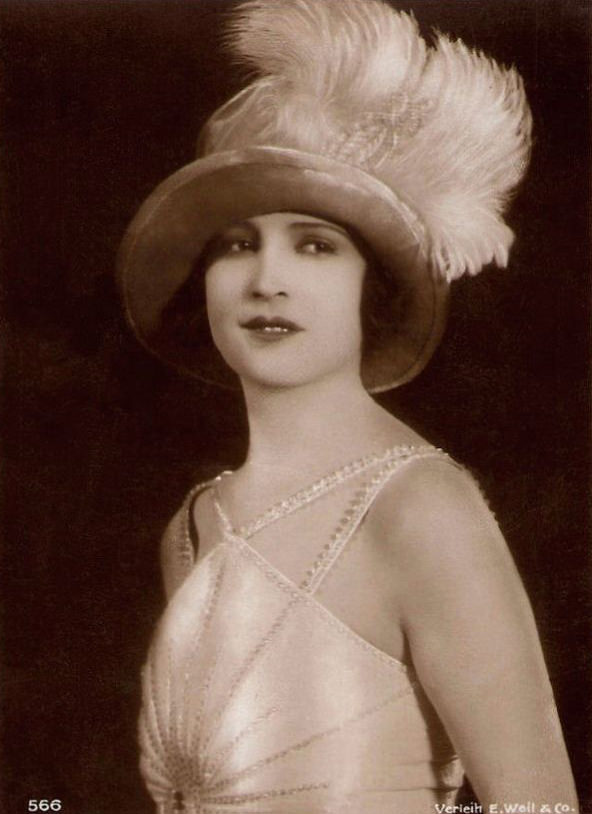
Claire Rommer (1904-1996), an elegant German actress, made her mark in the film industry with her appearances in approximately 50 German film productions during the 1920s and early 1930s. Her talent and on-screen presence captivated audiences, and she gained recognition for her successful career in the industry.
Unfortunately, Rommer's promising career came to an abrupt halt with the seizure of power by the Nazis. The rise of the Nazi regime in Germany had a profound impact on the entertainment industry, as it imposed strict control and censorship. Many talented individuals, including Rommer, saw their careers cut short as a result of the political climate.
#38 Toni van Eyck
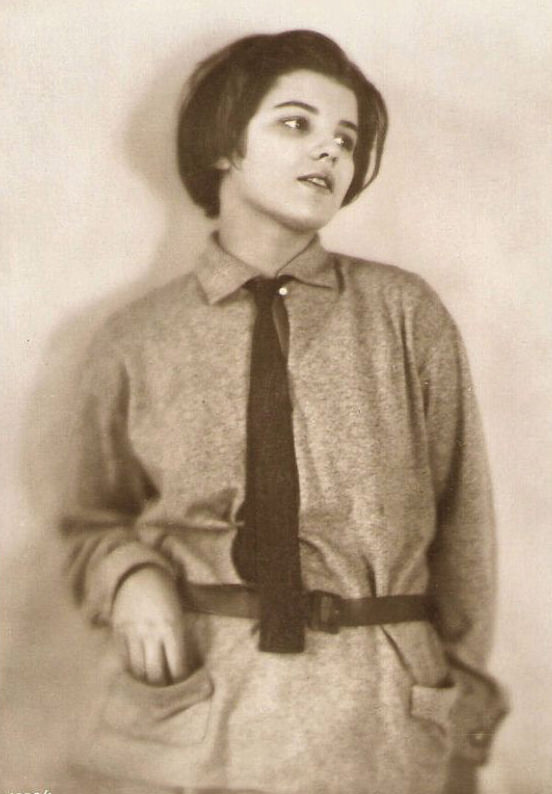
Toni van Eyck (1910-1988), a German actress, achieved stardom with her powerful portrayal of a rape victim in the groundbreaking education film Gefahren der Liebe/Hazards of Love (1931). Despite this film success, she primarily remained a stage actress throughout her career.
Born as Gertrud Johanna Antonie Eick in 1910 in Koblenz, Germany, Toni van Eyck received acting training at the Max-Reinhardt-Seminar in Vienna and the Otto-Falkenberg-Schule in Munich. She began her career at the age of 15, captivating audiences and critics alike with her performances on various Berlin stages. Her talent and presence caught the attention of the film industry, and she made her debut in the silent short film Ins Blaue hinein/Into the Blue (1929).
Van Eyck's breakthrough came with her leading role in the early education film Gefahren der Liebe/A Woman Branded (1931), where she portrayed a rape victim who ultimately turns into a murderer. This role showcased her dramatic range and established her as a notable actress. She continued to appear in films such as Kitty schwindelt sich ins Glück/Kitty is giddy to happiness (1932), Strich durch die Rechnung/Spoiling the Game (1932), Was wissen denn Männer/What Do Men Know (1933), and Herthas Erwachen/Hertha's Awakening (1933).
However, despite her success in the early 1930s, Toni van Eyck chose to primarily pursue a career in theater. She joined the ensemble of the renowned Burgtheater in Vienna from 1938 to 1942. After the war, she performed at the Salzburger Landestheater (Salzburg State Theater). In 1950, she made her last film appearance in Ruf aus dem Äther/Appeal from the Ether (1951), and subsequently focused on writing plays for the stage and radio. In 1955, she published her novel Ein Mann namens Miller (A Man Named Miller). Van Eyck continued to make guest appearances on stage for an extended period.
#39 Ruth Weyher
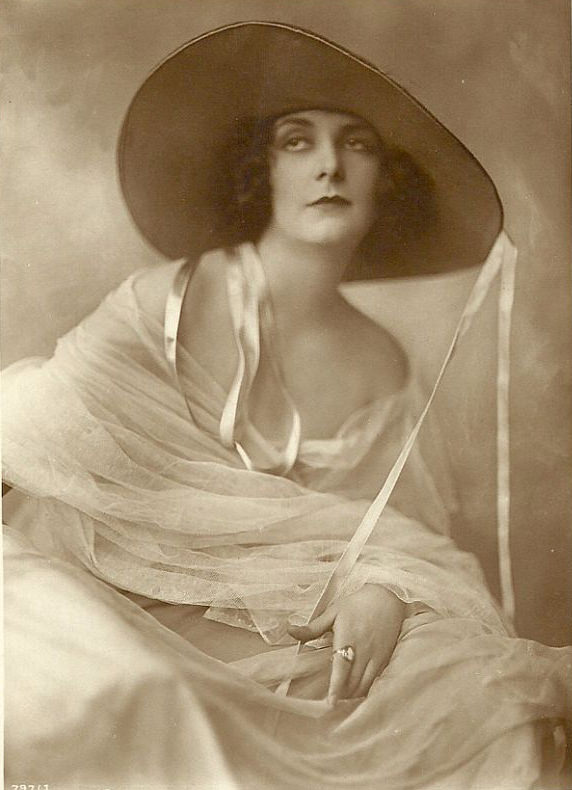
Ruth Weyher (1901-1983), a captivating actress, graced the German silent cinema with her beauty and passion. Over the course of her career, she appeared in 48 films between 1920 and 1930, leaving an indelible mark on the industry.
Weyher's talent and screen presence shone brightly in notable films such as the expressionist classic Schatten/Warning Shadows (1923) and G.W. Pabst's Freudian masterpiece Geheimnisse einer Seele/Secrets of a Soul (1926). Her performances in these films showcased her versatility and ability to bring complex characters to life on screen.
#40 Lien Deijers
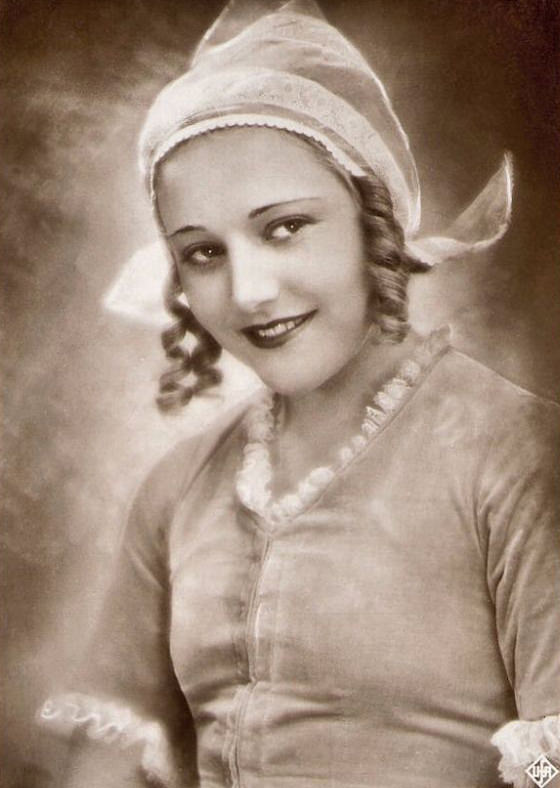
Lien Deijers (1910-1965), a Dutch actress also known as Lien Deyers and Lien Dyers, entered the world of cinema under the tutelage of renowned director Fritz Lang, who discovered her talent and cast her in the film Spione (1928). With her debut, Deijers embarked on a career that spanned both the late silent era and the early sound era of film.
During this period, Deijers appeared in a string of films, showcasing her acting skills and captivating audiences with her performances. However, after 1935, her star began to fade rapidly, and her career experienced a downturn. Tragically, Lien Deijers' life took a tragic turn. While details about the specifics are unclear, her life ended in unfortunate circumstances.


